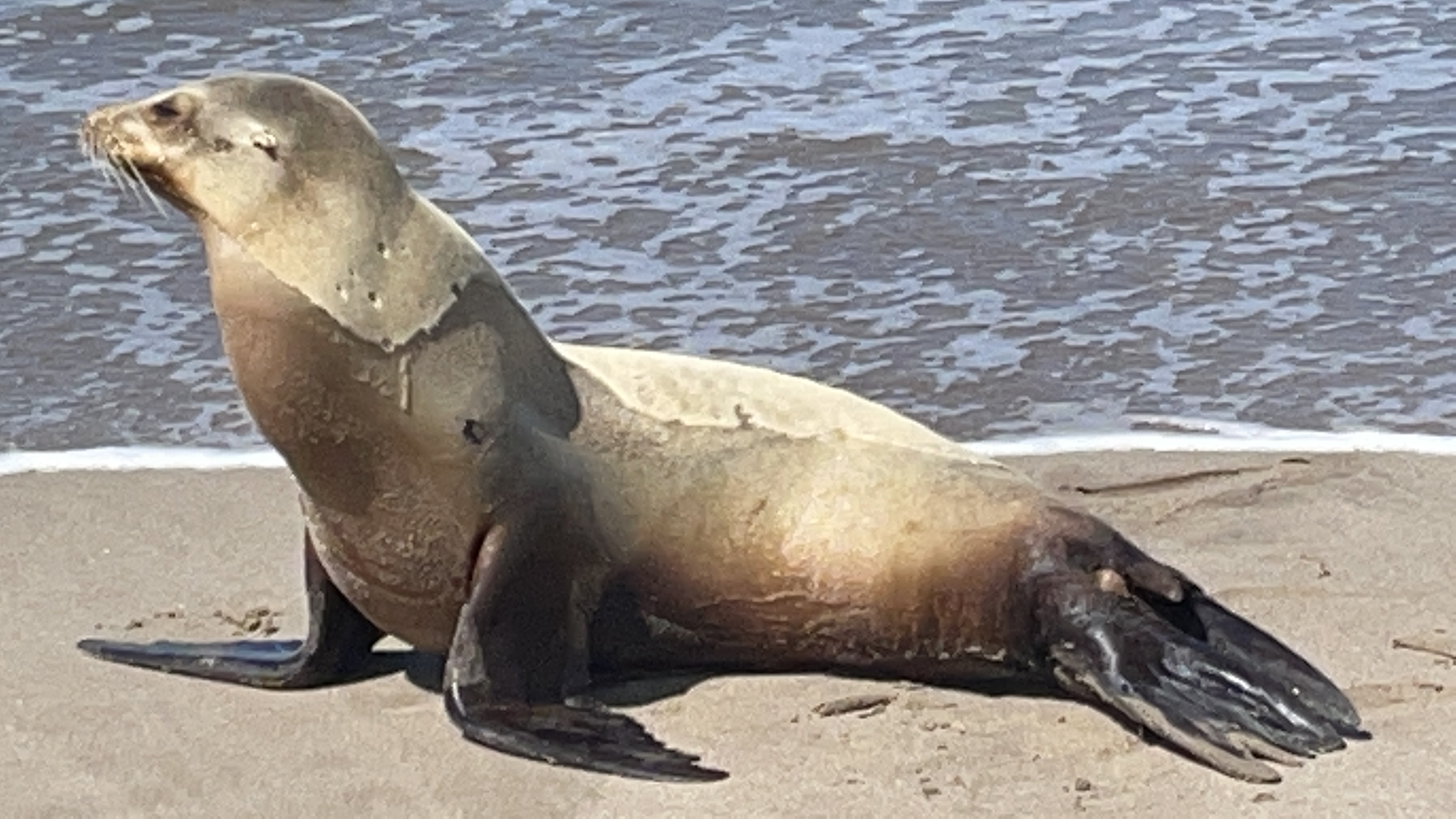
Why are we seeing many California sea lions and common dolphins strand, act disoriented, roll in the waves, seem lethargic, possibly seize and die on our local beaches right now?
Our local marine mammals, which are considered “sentinel mammals,” or a type of species that indicates the health of their environment, are experiencing the results of a harmful algal bloom (HAB) that cause domoic acid poisoning toxicosis (DA). DA attacks the central nervous systems and brains (hippocampus) of marine mammals and causes extreme disorientation, seizures and death.
While only a few forms of algae are harmful, HABs, can occur in fresh, marine (salt), and brackish (a mixture of fresh and salt) water bodies and can cause a neurotoxin to work through the food web from noxious phytoplankton to fish to foragers.
Some HABs produce toxins that have harmful effects on people, fish, marine mammals, and birds alike.
In a balanced ecosystem, phytoplankton provide food for a wide range of sea creatures including shrimp, snails, and jellyfish. When too many nutrients are available, phytoplankton may grow out of control and form HABs.
Nutrients can come from nitrogen-based fertilizers used in agriculture which cause naturally occurring blooms to become toxic as the fertilizer run off from fields from irrigation and storm water run-off along with other pesticides used in our gardens, lawns, and farms.
What you can do:
Follow DA trends at SCOOOS at https://coastwatch.pfeg.noaa.gov/erddap/griddap/charmForecast0day.graph
Find out how to eliminate nutrients and pesticide use in your home, yard and garden by attending an Ocean Friendly Garden event at ventura.surfrider.org
Report a dead, sick, injured sea mammal to Channel Islands Marine Wildlife Institute Hotline Response (CIMWI) at (805) 567-1505 and leave a message with detailed location or GPS.
Keep dogs and other people from the stranded animal at the length of a school bus . Pay attention to any signs or perimeters posted by CIMWI.
Information on the health effects of HABs on marine animals, shellfish, and people is available from NOAA, the Woods Hole Oceanographic Institution, and the Centers for Disease Control and Prevention.
